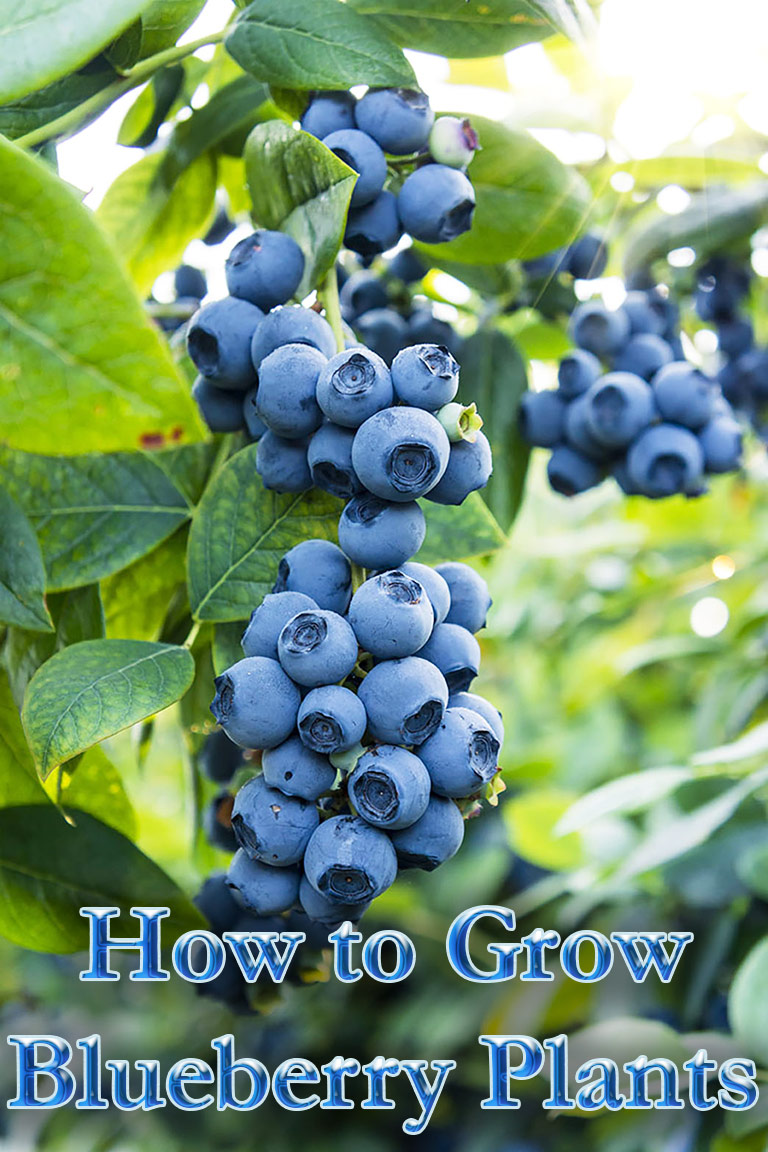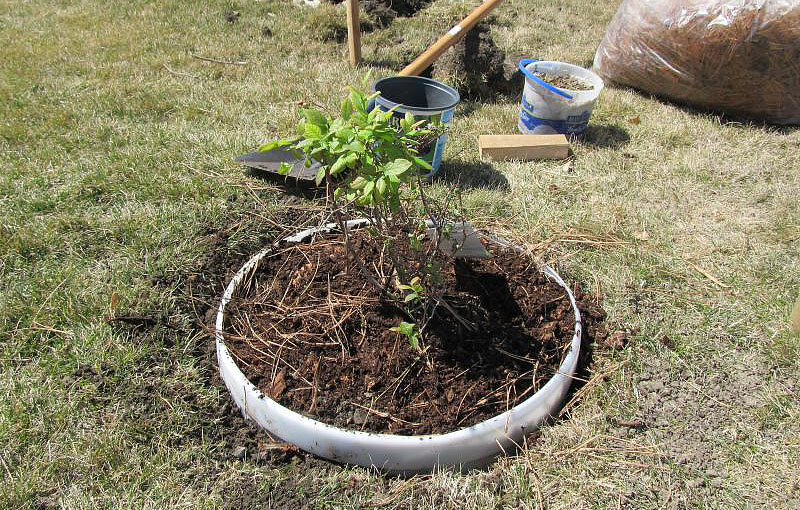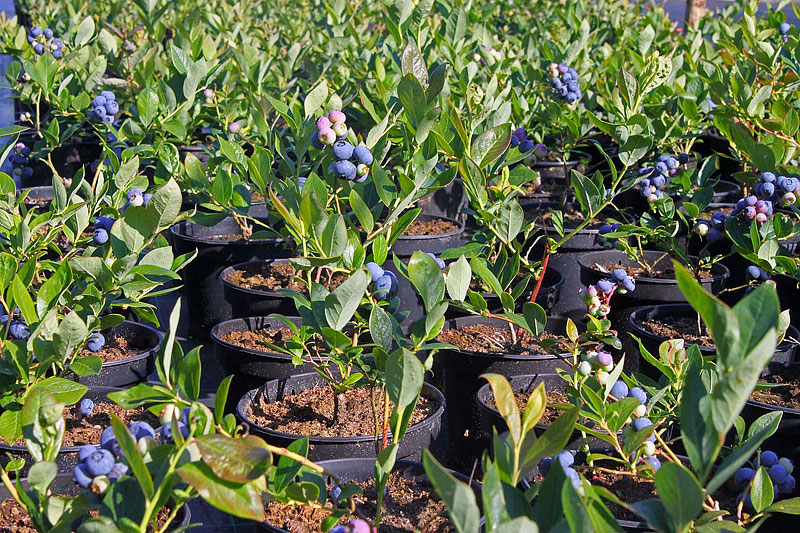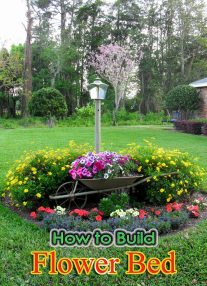
The modern blueberry is a 20th century invention. Before the 1900s, the only way to enjoy these North American natives was to find them in the wild. Then, scientists started to unlock the secrets of cultivating blueberries, and we’re glad they did! Plump, juicy berries are now easy to grow in your backyard on bushes that are resistant to most pests and diseases, and can produce for up to 20 years. A relative of rhododendron and azalea, blueberry bushes are also an attractive addition to your overall landscape, offering scarlet fall foliage and creamy white spring flowers.
There are three types of blueberries: highbush, lowbush and hybrid half-high. The most commonly planted blueberry is the highbush. Most blueberry breeding has focused on this species, so there are many varieties that range widely in cold hardiness and fruit season, size, and flavor. See more about blueberry varieties below.
Planting Blueberry Plants
Blueberry plants need full sun
Once you have your location selected, make sure that the location will get full sun, at least ¾ of the day. Blueberries will tolerate partial shade, especially late in the day.
Blueberries will grow in higher pH, but to achieve highest production, you will need to amend the soil around the plants. This can be done easily over time. Don’t try and reduce the pH all at once; a .5 per year reduction is ideal. Lower your pH by using the following:
- Sawdust from any conifer (pine, spruce, fir). If you use sawdust, pay attention to Nitrogen; if leaves are yellowing, that indicates a Nitrogen deficiency.
- Ammonium Sulfate fertilizer
- Ground Sulfur fertilizer
Plant blueberries at exactly the same depth as grown at the nursery. Dig the hole twice the size of the roots, and back-fill with a rich compost mixture.

If compost is not available, use the finest bark mulch you can find, and add 10% peat moss. Once planted, continue to add fresh compost as a top-dressing to build up your organic matter. Once planted, remove 25% of the branches; this will promote new, vigorous branching, and the 25% you removed will be replaced quickly.

During the first year, the plants are getting established, and you will not need to prune until year 3, after they have finished fruiting. Pruning is done well when you open up the inside of the plant and remove the oldest, darkest branches.
Blueberries, because they are shallow-rooted, do require more water than most fruits so the surface roots do not dry out. Blueberries respond best to quality (deep) watering rather than keeping the surface moist. Water will move to the surface.
Fertilize in early spring, as leaves are breaking from dormancy. A soil test is best, but a 10-5-5 is a good, well-balanced fertilizer. A second fertilizer application after pruning will provide the nutrition needed for the new growth to break from the pruned branches.
Care
- Mulch to keep shallow blueberry root systems moist, which is essential. Apply a 2-4 inch layer of woodchips, saw dust or pine needles after planting.
- Supply one to two inches of water per week.
- For the first four years after planting, there is no need to prune blueberry bushes. From then on, pruning is needed to stimulate growth of the new shoots that will bear fruit the following season.
- Drape netting over ripening blueberries, so that the birds won’t make away with the entire crop.
- Prune plants in late winter, preferably just before growth begins.
- On highbush varieties, begin with large cuts, removing wood that is more than six years old, drooping to the ground, or crowding the center of the bush. Also remove low-growing branches whose fruit will touch the ground, as well as spindly twigs.
- Prune lowbush blueberries by cutting all stems to ground level. Pruned plants will not bear the season following pruning, so prune a different half of a planting every two years (or a different third of a planting every three years).
- Do not allow the bush to produce fruit for the first couple of years. Pinch back blossoms, this will help to stimulate growth.
Pests/Diseases
- Birds
- Blueberry Maggot
- Powdery Mildew
Harvest/Storage
- Blueberries will be ready for picking in late July-mid August.
- Don’t rush to pick the berries as soon as they turn blue. Wait a couple days. When they are ready, they should fall off right into your hand.
- Be aware that full production is reached after about 6 years.
- Blueberries are one of the easiest fruits to freeze. Wash, dry thoroughly, and pop them in the freezer in a plastic container with a lid or a plastic bag. You’ll have berries all winter long.
Recommended Varieties
Blueberries are partially self-fertile, so you will harvest more and larger berries by planting two or more varieties. Planting more than one variety can also extend the harvest season.
Highbush (Vaccinium corymbosum): A six-foot shrub adapted from Zone 4 to Zone 7. For withstanding cold winters, choose ‘Bluecrop’, ‘Blueray’, ‘Herbert’, ‘Jersey’, or ‘Meader’. For big berries, choose ‘Berkeley’, ‘Bluecrop’, ‘Blueray’, ‘Coville’, ‘Darrow’, or ‘Herbert’. For flavor, usually the main reason for growing your own fruit, choose ‘Blueray’, ‘Darrow’, ‘Herbert’, ‘Ivanhoe’, ‘Pioneer’, ‘Stanley’, or ‘Wareham’.
Lowbush (V. angustifolium):For the coldest climates, lowbush varieties are your best bet, adapted from Zone 3 to Zone 7. These are the blueberries you find in cans on supermarket shelves. When fresh, the fruits are sweet and covered with a waxy bloom so thick that the berries appear sky blue or gray. The creeping plants, a foot or so high, are spread by underground stems, or rhizomes. They blanket the rocky upland soils of the Northeast and adjacent portions of Canada. Lowbush blueberries make a nice ornamental fruiting ground cover. Plants sold by nurseries are usually seedlings or unnamed wild plants, rather than named varieties.
Half-High: Breeders have combined qualities of highbush and lowbush blueberries into hybrids known as half-high blueberries. University of Minnesota introductions include ‘Northcountry’, a variety that grows 18 to 24 inches high and has excellent, mild-flavored, slightly aromatic sky-blue fruits; and ‘Northblue’, which grows 20 to 30 inches high and produces an abundance of dark-blue, nickel-size, somewhat tart fruits-just right for pies. ‘Northland’ is a half-high-3 to 4 feet-from Michigan, with bland, average-quality fruit.





Leave a Reply